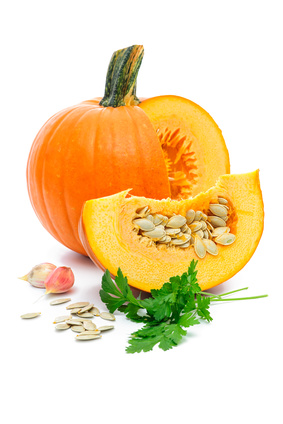Phosphor (P)
 An adult person contains around 800-1,200 grams of phosphor. Together with calcium, phosphor is one of the most abundant minerals in the human body and it is vital to maintain the proper balance. About 90 per cent of the body's phosphor is found in our bones and teeth. Phosphor is also an active element of many biochemical processes and even functions as the chemical compound phosphate. Phosphor is regulated in the same way as calcium where vitamin D supports the uptake from the digestive channel, a parathyroid hormone regulates the blood content of the mineral, the kidneys control the excretion, and the bones function as a storage facility.
An adult person contains around 800-1,200 grams of phosphor. Together with calcium, phosphor is one of the most abundant minerals in the human body and it is vital to maintain the proper balance. About 90 per cent of the body's phosphor is found in our bones and teeth. Phosphor is also an active element of many biochemical processes and even functions as the chemical compound phosphate. Phosphor is regulated in the same way as calcium where vitamin D supports the uptake from the digestive channel, a parathyroid hormone regulates the blood content of the mineral, the kidneys control the excretion, and the bones function as a storage facility.
Functions and importance for
- Strong bones. Together with calcium and magnesium, phosphor constitutes the solid matter of bone tissue
- Strong teeth
- Muscles
- The brain and nervous system
- Energy metabolism - a part of ATP (adenosine triphosphate) that is energy stored chemically in molecular form
- Constituent of cell membranes (as a fatty acid)
- Constituent of our genetic material (DNA)
Deficiencies and poor utilisation may be caused by
- Early birth - observed in prematurely born babies
- Diseases with reduced uptake from the intestine
- Large intake of aluminum hydroxide that binds phosphor and prevents the uptake of the mineral. Aluminum hydroxide is found in antacids such as Link and Novaluzide
Deficiency symptoms
Rarely seen. This is in part because the diet contains plenty of phosphor but also because our kidneys are able to retain phosphor in situations with deficiency.
- Poor nerve and brain function
- Muscle weakness caused by a lack of ATP
- Reduced appetite and feeling unwell
Long-termt:
- Decalcification and fragile bones
- Dental damage
Sources
Phosphor is bound to protein and is found in all types of, especially those rich in protein such as meat, fish, cheese, nuts, and kernels. In grain products and legumes phosphor occurs in the form of inositol hexaphosphate. Phosphoric acid and phosphates are added to certain foods to preserve them. This is seen with soft drinks (especially Coke), certain cheeses, ice cream, candy, breakfast cereals, and meat products such as sausages and bacon.
Phosphor content in mg per 100 grams
| Pumpkin seeds | 1170 |
| Cheese | 530-900 |
| Salmon, cod | 200 |
| Chicken, veal | 173,178 |
| Cauliflower, chives | 53 |
Recommended daily allowance (RDA)
Adults: 11 years of age and older: 600 mg
Children: 1-10 years of age: 700 mg
Pregnancy and lactation: 700 and 900 mg (respectively)
Overdosing
Overdosing is rarely seen, as the kidneys control phosphor levels. Acute elevated phosphor levels may lead to elevated blood calcium levels that may cause cramps and more serious conditions that are described in the chapter about calcium. Also, see the following section.
Important information
Ingesting too much phosphor in relation to calcium may cause a calcium deficiency, as excess phosphor is excreted in the urine together with calcium taken from the bones. In epidemiological studies, phosphoric acid that is used in various soft drinks (mainly Coke) is associated with lower bone density.







